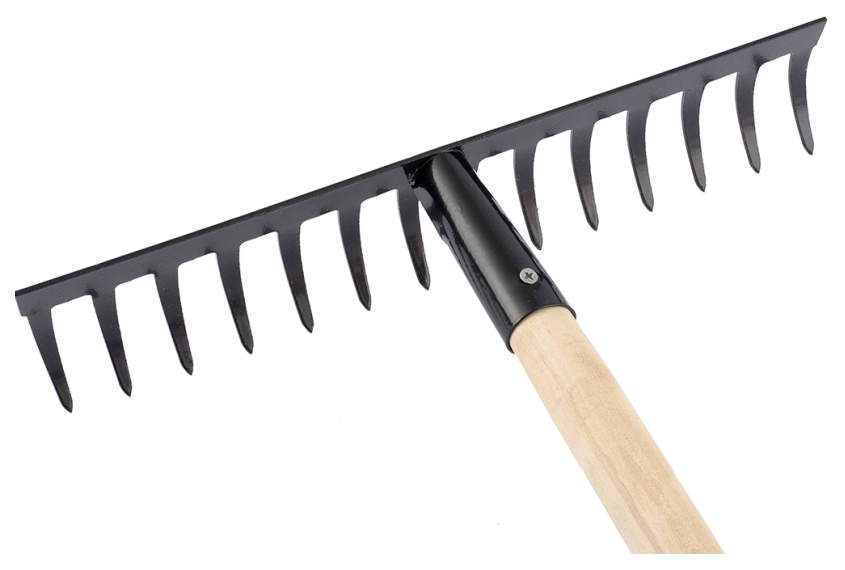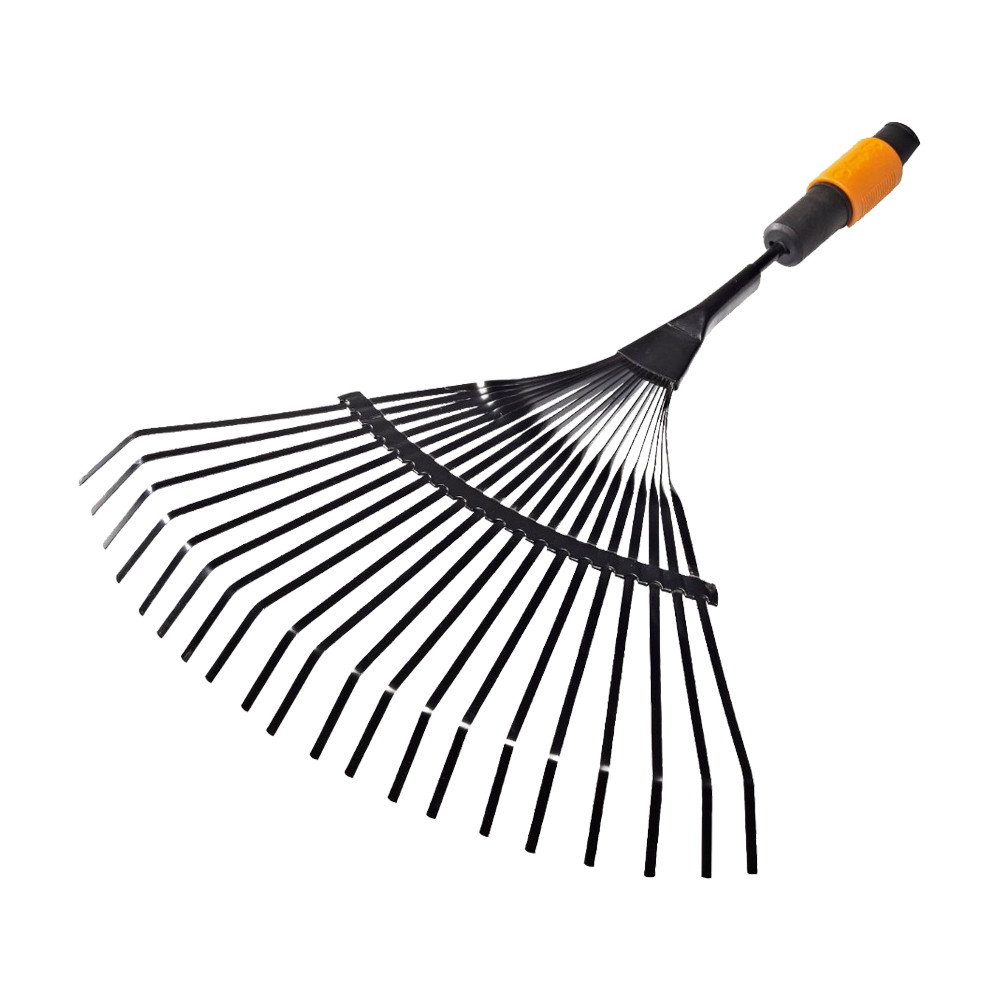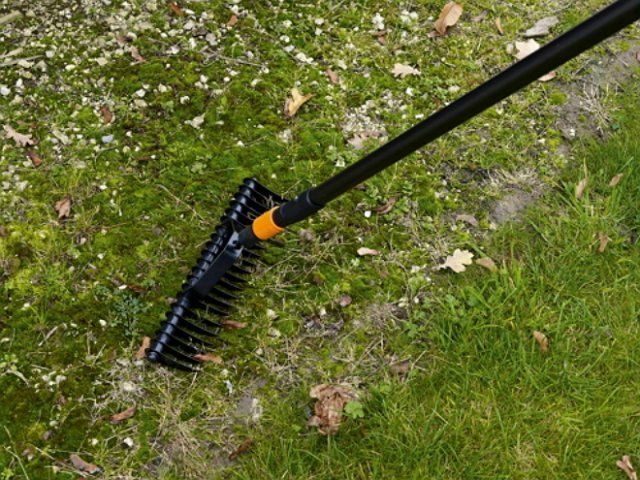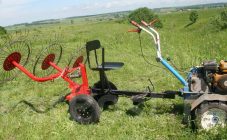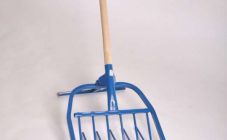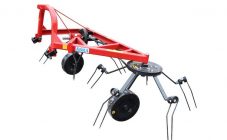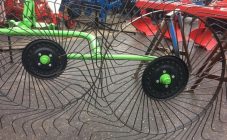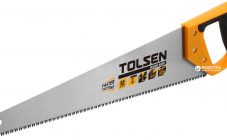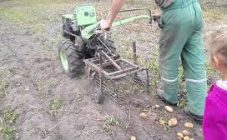Content:
A rake is a tool for agricultural and other types of work (picking berries, laying asphalt, searching for missing small things). The rake, invented about 10,000 years ago during the gradual transition of hunters and gatherers to agriculture, still remains indispensable in many works on garden and summer cottages, in farms, greenhouses.
Description
The classic rake consists of parts such as:
- "Ridge" - a base, which is a wooden block or a metal bar, from 20-30 to 60-80 cm long;
- "Teeth" - cone-shaped with pointed ends or twisted working bodies located at right angles to the "ridge". Depending on the metal of the base, the teeth can be inserted and wedged into holes in a wooden block or be integral with a metal bar.
- Handle ("grabelina") - connects to the "ridge" using a special attachment on it. So, on the rake familiar to all, the role of such an attachment is performed by a metal tube welded to the rake base. In the American version, such a cutting tube is not welded directly to the ridge, but is attached to it with a fork-shaped branch, the ends of which are welded to the ends of the base.
The main functions that the rake does - RCommon and popular among gardeners and gardeners tools are:
- Breaking up large clods of soil after digging or plowing a site;
- Leveling the soil;
- Loosening the soil;
- Removal of roots and weed sprouts from the soil surface;
- Raking up foliage and plant debris;
- Tedding and shoveling of hay, rotten residues.
Depending on the traction used when working with this tool, the rake is:
- Hand (garden) - a classic light agricultural tool used for various manual work in the garden and vegetable garden.
- Horse - trailed agricultural units for raking crop residues, tedding hay using horses as draft. These consist of a frame with shafts, two large running wheels without chambers, 26-42 springy working bodies with a semicircular shape. For control, a seat and a pedal for raising the teeth are installed on the frame. Due to a decrease in the number of horses in rural areas, horse rakes have recently been used extremely rarely, yielding to more productive and reliable trailed and mounted units for mini tractors and walk-behind tractors.
- Tractor - mounted and trailed agricultural units with a grip up to 6 meters, driven by tractors. Like horse rakes, they are used for tedding, raking and swathing of hay and straw. With large volumes of work in large agricultural organizations, such rakes are included in the hay complex of machines, which, in addition to them, includes various mowers and balers.
Types of garden rakes, purpose
Traditional (straight)
The straight rake is a classic form of this tool, consisting of a plastic or metal base ("ridge") with teeth and a tube for attaching the handle. Such rakes are used for all types of garden work: from leveling the soil after digging and combing out the roots and rhizomes of weeds to harvesting foliage and plant residues.Depending on the shape of the teeth, they are divided into simple and twisted rakes. In the latter, the teeth are made in the form of a kind of corkscrews (spirals), which improves loosening and leveling of the soil, and allows more efficient removal of rhizomes and weed shoots from it.
Made of metal, durable and resistant to environmental influences plastic.
Fan-shaped
Unlike classic straight rakes, they represent a plastic or wooden handle, to which a ridge is rigidly fixed - a corner with holes for teeth. The working bodies themselves, bent at the ends, pass through the holes on the "ridge" and are attached to a special movable device that has a lock and moves freely along the handle. This design allows you to change the working width from 18-20 to 30-50 cm.
A fan rake is used to rake foliage and dry plant residues, when caring for a lawn, to remove garbage.
Rake-transformers
They are a universal tool, consisting of a light aluminum handle (handle), to which various attachments included in the set are attached using a special fixing mechanism. This is a universal rake, a leaf rake, a rose care rake. Due to the variety of the latter, such a rake is used for various jobs: from loosening and leveling freshly dug soil to collecting foliage, grass or debris.
Highly specialized rake
In addition to the garden rake used for a number of agricultural works at the summer cottage, highly specialized analogues of this tool are used to perform only certain jobs. Among this kind of rake, the following are distinguished:
- Aerators are tools that have sickle-shaped teeth with sharp ends. When treating a lawn or lawn, the teeth remove leaves, moss bumps, make grooves up to 3 cm deep, increasing the penetration of air, moisture, and nutrients to the root system.
- Lawn - tools up to 60 cm grip with fine and closely spaced teeth and limit bars fixed at right angles to the base. They are used for raking cut grass.
- Rake for picking berries - devices used to pick wild berries such as lingonberries, blueberries, blueberries, cranberries. Such a fruit picker consists of a metal bucket with teeth and a wooden handle. To pick berries, they are carefully "combed out" by the teeth of the device, and then rolled into the bucket. The wire teeth of such a device, which have a round cross-section and a smooth surface, minimally injure the berry bush, making picking more productive and faster.
- Searching rake - devices for searching at the bottom of the water area of the beach or bathing pool for chains and other jewelry made of precious metals lost by bathers. Such a rake is made for an independent beach search from two pieces of a heavy corner 60-60 cm long, nested one into the other and fixed by welding, with teeth welded on both sides. In order to catch small objects on the bottom and in the sand, each tooth of such a rake has several cuts. For the convenience of casting the device over long distances, a wire loop for the rope is welded to the corners from the outside. In addition to this design, a simple rake with a long handle (4-5 meters) is used to search for gold products on the beach, with fishing tees attached to each of their teeth and an additional row of teeth made of long screws located at an angle of 30-45 0.
In addition to lawn care, berry picking, searching for precious metal products lost on the beach, this tool is also used in road construction. Thus, an aluminum or wooden rake for asphalt with triangular teeth is used to evenly distribute and level the hot road mixture.
Making a rake with your own hands
You can make a straight rake with your own hands as follows:
- A piece with a length of 40 cm is cut from a solid 2-3 meter piece of steel corner 20 × 20 × 3 mm;
- In the center, to the inner surface of its shelves (two planes located at right angles), a fastener for a handle from an old rake or a tube is welded, the diameter of which will be smaller than that of a standard wooden handle.
- In the tube, on one line, two holes are made for screws or nails, with the help of which the handle will be fixed in such a mount;
- Fingers (teeth) 10-12 cm long are cut from smooth steel round bars or reinforcement with a diameter of 8-10 mm.
- One of the ends of each tooth is sharpened on emery;
- The teeth are welded to the inner surface of one of the angle shelves in such a way that the angle between them and the handle for the handle is 90 0. The pitch of the teeth is 5 cm.
- The collected rake is thoroughly cleaned with a metal brush and sandpaper, degreased with a solvent and painted with dark paint;
- After the paint has dried, the shank, previously ground to the required diameter, is inserted into the tube and fixed in it with small nails or self-tapping screws.
How to choose a rake
When choosing a rake, factors such as:
- Purpose - for work on leveling and loosening the soil, use a strong and simple straight rake. For cleaning leaves, debris and plant debris, the fan type of this tool is more convenient. When tedding and raking the dried grass into rolls, tractor tedders or a roll rake are used.
- Shaft length and material - When working with this tool, it is very important to choose the right shank for the rake. Its length should be no more than the height of a person who will regularly work as a rake. Among the most convenient and reliable materials for cuttings, preference should be given to aluminum or plastic. Handles made of them, unlike wooden ones, have less weight, greater strength and are not subject to decay.
- Working width - in the garden and flower beds, a rake with a small grip (up to 40 cm) is used to remove fallen leaves and debris. For loosening and leveling the soil, tedding and raking hay, wide-grip tools are used (up to 60-80 cm - for hand rakes; up to 5-6 meters - for tractor units)
- Tooth pitch - for cleaning foliage, debris, small plant residues, use a tool with a distance between the teeth of no more than 3 cm.When working with the soil, as well as for lawn care, a rake is used with a tooth pitch of 5-6 cm;
- Material - an iron rake with strong teeth is more convenient and reliable for working with soil. For cleaning foliage, debris, tools made of plastic and springy wire are used. Recently, wooden rakes, due to the fragility of the material, are rarely used.
Thus, the rake, despite its outward simplicity and unpretentiousness, is an unusual and versatile tool that allows you to perform many different operations: from loosening freshly dug soil to tedding and raking hay. It has many different designs and types.Another advantage of this tool is its simple self-production, which allows you to quickly and cost-effectively make a rake with non-standard characteristics for specific purposes.
